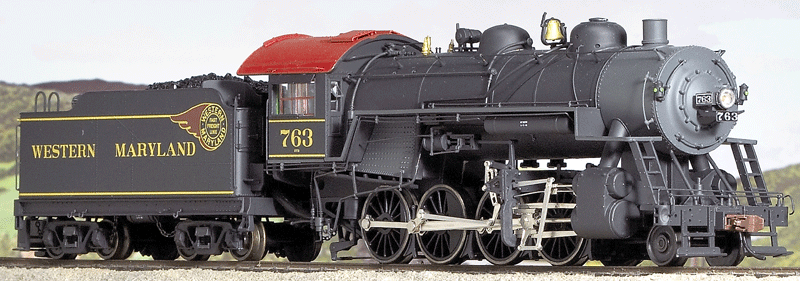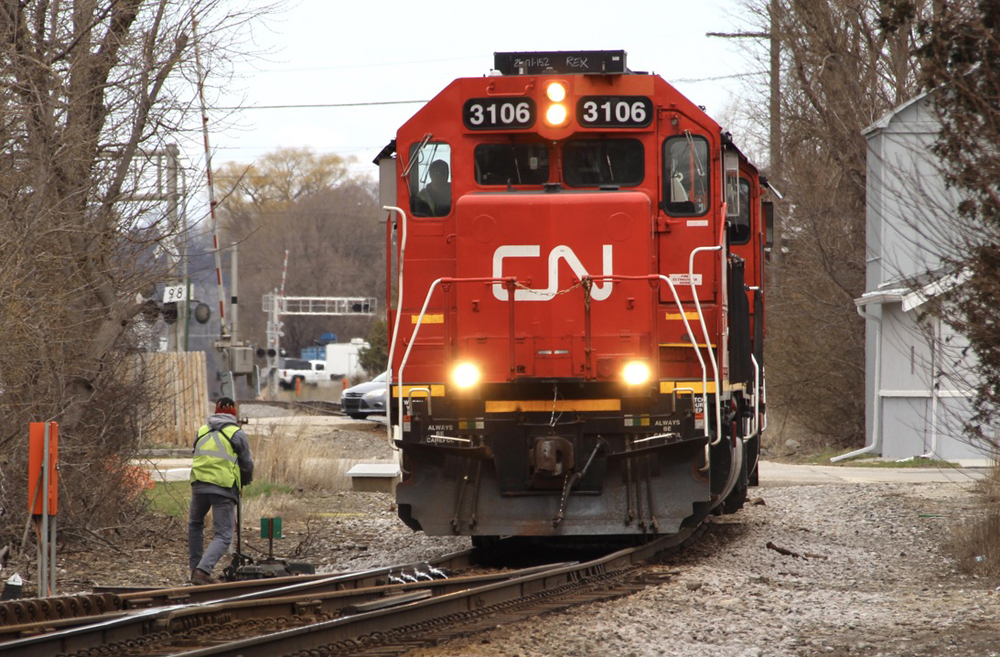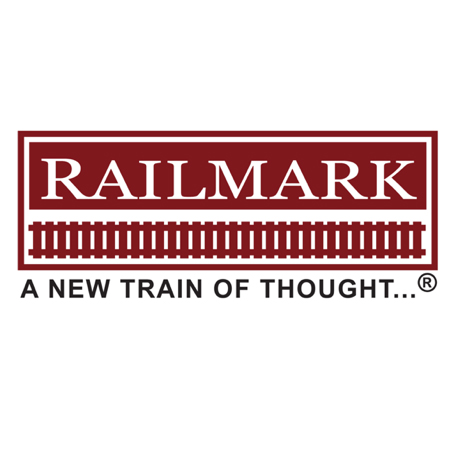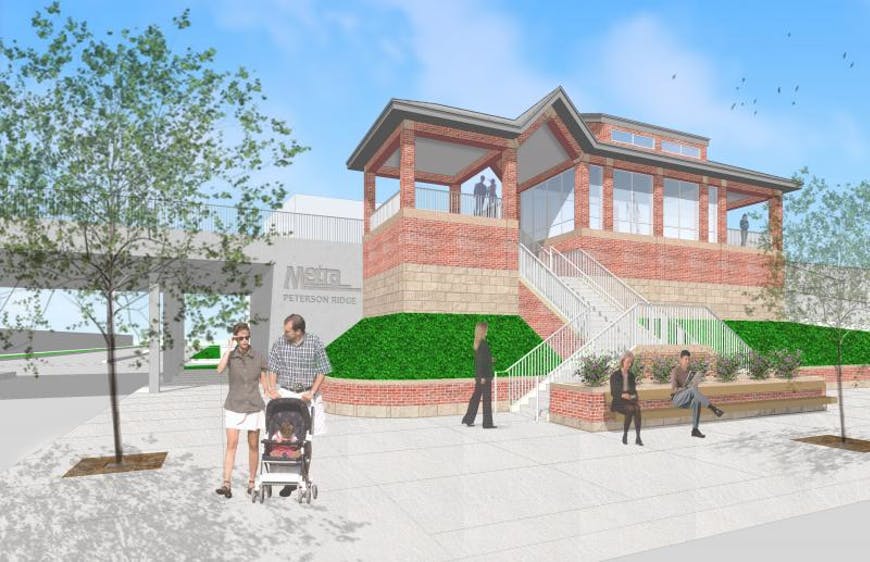The B&O at one time had more than 400 of the E-27-class 2-8-0 locomotives. The flexibility and utility of those locomotives led them to be among the last B&O steamers retired, sticking around until 1959. Alas, only one of the railroad’s Consolidations survives today, and it belonged to the E-8 class.
Regarding the road name on our sample locomotive, one 2-8-0 is still running today with “Western Maryland” painted on its tender. However, it started life as a Lake Superior & Ishpeming RR steamer, and today it regularly operates on the Western Maryland Scenic RR.
The creation of this S gauge 2-8-0 was a multi-year labor of love for the folks at S-Helper Service. They sailed the turbulent seas of product development on the far side of the world, changed engineering staffs at the factory in China, and encountered countless glitches during the creation and production of this model, including the need for a recall/replacement program for some of the electronics on the earliest models.
Despite all of the Maalox moments and Excedrin headaches, S-Helper Service didn’t cut corners, and the result is one of the finest locomotive’s I’ve run.
The model
The S-Helper Consolidation is a very business-like model. The boiler and cab are die-cast metal, and the tender shell is made from injection-molded plastic.
The pilot features footboards and an operating scale-sized coupler out front, although our American Flyer-compatible sample has a postwar-style coupler out back and larger, Flyer-style wheel flanges.
Three arcing grab irons and two separately applied marker lights highlight the smokebox face. On our Western Maryland steamer, the headlight and number boards are centered. Other roadnames feature centered or raised headlights, as per prototypical practice.
The boiler is a palette for details, such as rivets, boiler bands, and add-on piping. The handrails and most of the piping are crafted from a thinner-diameter wire than you would find on most O gauge steamers. This gives this S gauge model a more refined, delicate appearance. Atop the boiler you’ll find steam and sand domes as well as an add-on bell, whistle, and turbine.
The running board on the fireman’s side of the locomotive includes extra piping and the heads of two compressors poking through the deck.
Look beneath the running boards toward the cab and you’ll find a nice set of rivets denoting the firebox. There’s also elaborate running gear, including an attractive reverse-lever system. The drive wheels are slightly darkened, and the two inner axles have blind drivers.
The cab is pretty neat. It features separately painted window panes with window “glass.” Above the windows are sun shades, and there are wire grab irons over the windows and along the rear of the cab roof. Two separately applied hatches accentuate the cab roof.
The cab interior has a full backhead and two seated crew figures. A small bulb illuminates the cab. I was impressed with the separately applied firebox door lever and the texture of the door, which suggests it has been exposed to intense S gauge heat over many years.
An electrical tether connects the locomotive to the tender. The tender looks good and features loads of rivet and seam detail.
The rear of the tender features a simulated uncoupler arm, backup light, number board, and a ladder. The coal load looks sharp, and the tender’s rear deck contains a rectangular water hatch. The only jarring aspect of the tender is the humongous Flyer-compatible coupler. Boy, it never looked larger!
The model’s paint and decoration are first rate. The application of the Western Maryland’s famed “Fireball” scheme on our sample gives the engine a jaunty appearance, which suggests fun, rather than somber, serious railroading. I’ll opt for fun any day. All the lettering is as crisp as a fresh $10 bill.
Other road names available are Santa Fe, B&O, Erie, Maine Central, New York Central, Union Pacific, and Southern.
On the test track
This model may be the quietest steam locomotive I’ve ever run. I could barely hear the sound of the running gear and encountered no motor noise at all.
Our sample locomotive features a smoke unit and is configured for use with Dallee’s LocoMatic sound and control system. A LocoMatic control box, purchased separately, sends digital signals through the rails to control the movement of LocoMatic-equipped locomotives as well as giving an operator control over sounds.
I tested the model using a Dallee LocoMatic control box and a Lionel KW transformer. The DIP switches for the locomotive’s LocoMatic settings are located beneath the tender’s water hatch. All LocoMatic features functioned as advertised, including steam-locomotive sounds, a whistle, and a bell.
Our low-speed test average was 6.5 scale mph, and the high-speed test average was 55.3 scale mph. The locomotive weighs 2 pounds 81/2 ounces.
Drawbar pull measured 5 ounces, which is pretty good considering that the Consolidation relies on its weight instead of traction tires to provide pulling power. Our main test train was a consist of 15 mixed-make and vintage S gauge cars that ran on a line with about a 2 percent grade. The locomotive never failed to tackle the grade or keep the freight cars rolling smoothly.
Sharp-eyed observers will note that the LocoMatic control box has no smoke-unit button. Just press Aux and Horn and, sure as A. C. Gilbert saved Christmas, smoke rises from the stack of S-Helper Service steamer.
This might not be the vortex of smoke that rises from fan-driven units in some monster O gauge steamers, but I found the volume of smoke to be quite satisfactory and easy on the sinuses.
S-Helper Service provides an interesting, “value-added” feature. The Consolidation comes with smoke fluid, a “bulb” container to dispense it, and even a tiny brass funnel to pour it into the stack without fear of spilling fluid down the sides of the boiler.
I enjoyed operating S-Helper Service’s nifty little Consolidation. It possesses a delightful mix of flawless performance and superb detail.
With the recent explosion of S gauge steam-freight power, anyone interested in a sharp-looking, smooth-running engine should jump at the chance to buy one of these Consolidations, because it may be a while before we see a rerun of this gem.
Price: $599.95 (AC with sound)
Features: Die-cast metal boiler and cab, can-style motor, directional lighting, smoke unit, Dallee LocoMatic sound and control system
Pros: Well-balanced look, good runner, S-Helper Service excelled in this project
Cons: None
Made in the People’s Republic of China for S-Helper Service















Have DCC version – absolutely fabulous!!
I have the "Locomatic" version and I couldn't be happier with an engine. The detail and its performance is spectacular, and it is backed up by a company that truly stands by their products. I feel comfortable that if anything becomes a problem, the S Helper folks will go the extra mile to make it right. This a great product by a great company!
This is a great engine (excellent detail and value). I have DCC versions and they run smooth and the sound is excellent. S Helper Service is very customer oriented and delivers excellent products. It was well worth the wait.